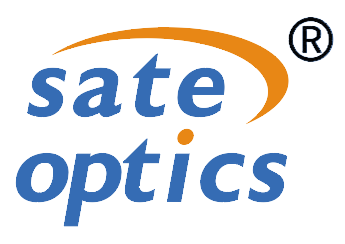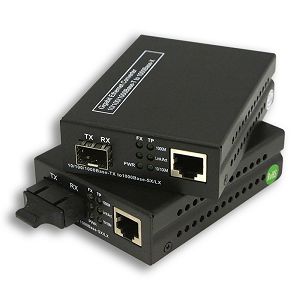Media Converter Application
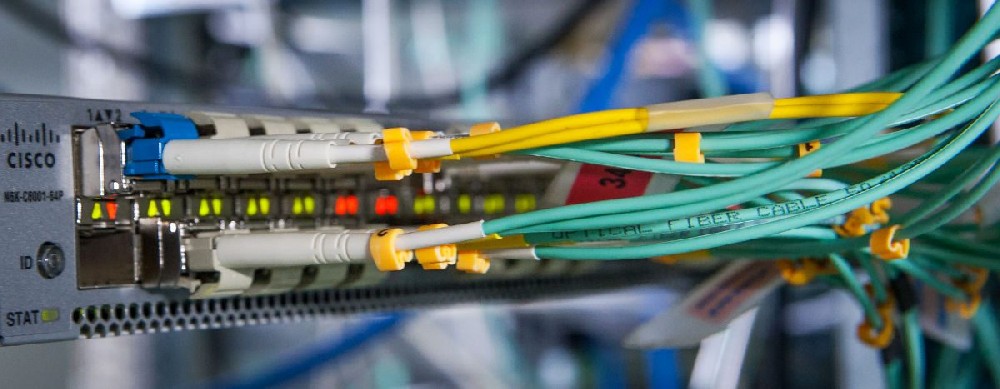
There is no doubt that Ethernet fiber-optic communications provide many advantages over copper based Ethernet communications. These include immunity to noise and further distance capabilities. Systems that require fiber-optic communication can use switches that contain built-in fiber optic ports. However, if your switch does not have built-in fiber optic ports or does not have enough fiber-optic ports, then a media converter will be needed to convert copper based communications to fiber-optic communications. This article will review the different types of media converters and provide information on the wide variety of applications for media converters.
What is a Media Converter?
Media converters are flexible and cost-effective devices for implementing and optimizing fiber links in all types of networks. Media converters enable you to connect different types of media, such as twisted pair, fiber, and coax, within a network. The most widely used converters are probably the ones used to convert computers UTP Ethernet ports to fiber. This enables you the ability extend your Ethernet network beyond the 100-meter limit imposed by copper cable. Besides, some other converters also convert multi-mode to single-mode, convert analog signals to digital, multiplex several signals over one fiber pair, or perform other signal processing. In a word, as a device to converter one media to another, media converters are really working.
Types of Media Converter
There are a wide variety of media converters available that support different network protocols, data rates, cabling and connector types. Two main kinds of media converters are copper-to-fiber media converter and fiber-to-fiber media converter.
Copper-to-Fiber Media Converters
The most common type of media converter is a device that functions as a transceiver, which is used to convert the electrical signal used in copper UTP network cabling into light waves used in fiber optic cabling. Fiber optic connectivity is necessary when the distance between two network devices exceeds the transmission distance of copper cabling. Copper-to-fiber conversion using media converters enables two network devices with copper ports to be connected over extended distances via fiber optic cabling.
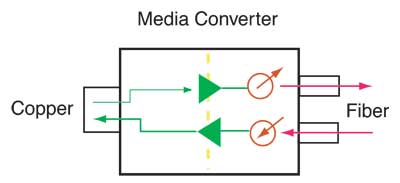
Ethernet Copper-to-Fiber Media Converters
Supporting the IEEE 802.3 standard, Ethernet copper-to-fiber media converters are used to provide connectivity for Ethernet, Fast Ethernet, Gigabit and 10 Gigabit Ethernet devices. Hence these converters are also usually divided into Fast Ethernet media converter, Gigabit media converter and 10 Gigabit media converter. The diagram below shows a typical application where Ethernet Media Converters connect to Ethernet Switches by way of Multimode fiber and UTP copper cabling.
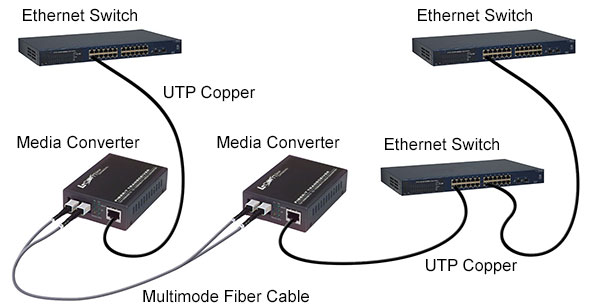
TDM Copper-to-Fiber Media Converters
The most common TDM copper-to-fiber converters are T1/E1 and T3/E3 converters, which provide a reliable and cost-effective method to extend traditional TDM (Time Division Multiplexing) telecom protocols copper connections using fiber optic cabling. T3/E3 and T1/E1 converters usually operate in pairs extending distances of TDM circuits over fiber, improving noise immunity, quality of service, intrusion protection and network security.Serial-to-Fiber Media Converters
Serial-to-fiber converters provide fiber extension for serial protocol copper connections. They can automatically detect the signal baud rate of the connected Full-Duplex serial device, and support point-to-point and multi-point configurations.
Fiber-to-Fiber Media Converters
Fiber-to-fiber media converters can provide connectivity between multi-mode (MM) and single-mode (SM) fiber, between different power fiber sources and between dual fiber and single-fiber. In addition, they support conversion from one wavelength to another. Fiber-to-fiber media converters are normally protocol independent and available for Ethernet, and TDM applications.
Multi-mode to Single-mode Converters
Enterprise networks often require conversion from MM to SM fiber, which supports longer distances than MM fiber. Mode conversion is typically required when lower cost legacy equipment uses MM ports but connectivity is required to SM equipment, a building has MM equipment, while the connection to the service provider is SM, and MM equipment is in a campus building but SM fiber is used between buildings.

Dual Fiber to Single-Fiber Converters
Enterprise networks may also require conversion between dual and single-fiber, depending on the type of equipment and the fiber installed in the facility. Single-fiber is single-mode and operates with bi-directional wavelengths, often referred to as BIDI. Typically BIDI single-fiber uses 1310nm and 1550nm wavelengths over the same fiber strand in opposite directions. The development of bi-directional wavelengths over the same fiber strand was the precursor to Wavelength Division Multiplexing.
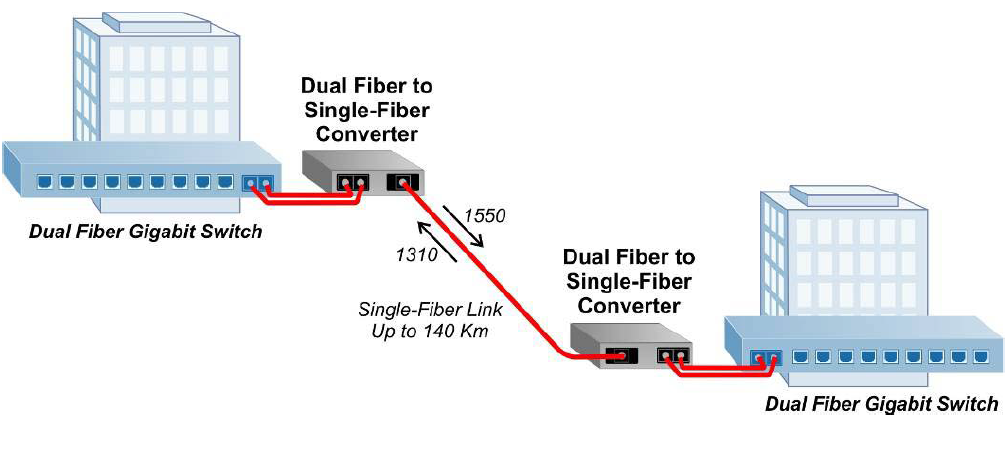
Applications of Media Converter
Media converters do more than convert copper-to-fiber and convert between different fiber types. Media converters for Ethernet networks can support integrated switch technology, and provide the ability to perform 10/100 and 10/100/1000 rate switching. Additionally, media converters can support advanced bridge features which including VLAN, Quality of Service (QoS) prioritization, Port Access Control and Bandwidth Control and really facilitate the deployment of new data, voice and video to end users. Media converters can provide all these sophisticated switch capabilities in a small, cost-effective device.
